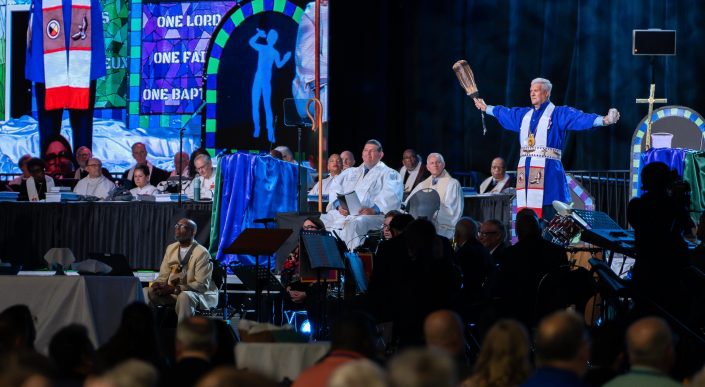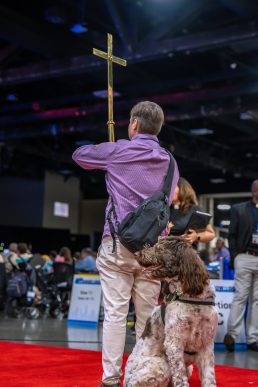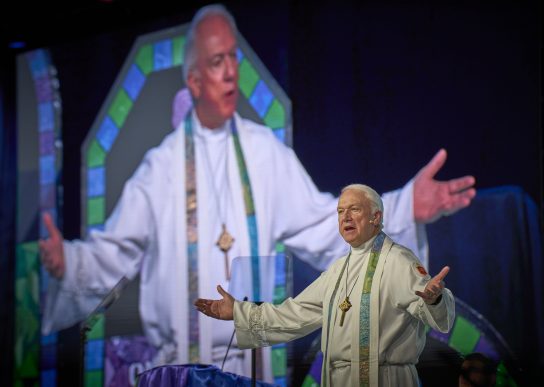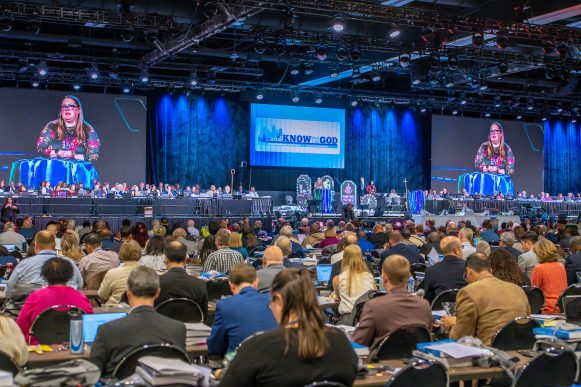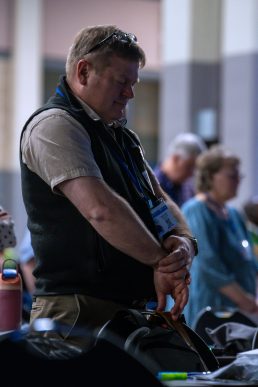The long-postponed 2020 United Methodist General Conference commenced April 23, after 2:00 p.m., with opening worship at the Charlotte, N.C., Convention Center, signaling a critical juncture for a denomination navigating through post-disaffiliation transitions and the global impact of the COVID-19 pandemic.
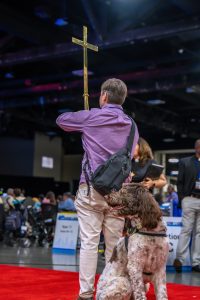
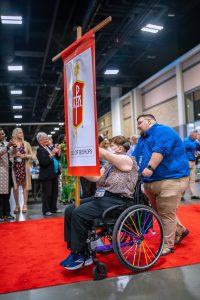 The service began symbolically inclusive, with a person aided by a service dog leading the processional while carrying the cross. A wheelchair user then led with the Episcopal banner, showcasing the Church’s commitment to inclusivity.
The service began symbolically inclusive, with a person aided by a service dog leading the processional while carrying the cross. A wheelchair user then led with the Episcopal banner, showcasing the Church’s commitment to inclusivity.
Bishop Thomas Bickerton, President of the Council of Bishops, anchored the opening service by reading Psalm 46 in its entirety, urging the assembly to “Be still, and know that I am God,” setting a reflective tone for his sermon. He challenged the assembly’s commitment to the future of the Church, asking pointedly, “Do you want to be in this room? Are you here to work for a culture marked by compassion, courage, and companionship?”
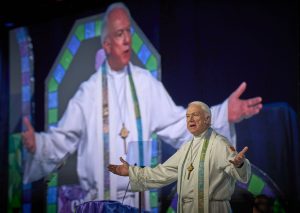
Bishop Thomas Bickerton, President of the Council of Bishops, preaches at opening worship. Paul Jeffrey, UM News, photo
His sermon became even more direct as he addressed potential discord: “If you can’t agree to that, what are you doing here? Maybe, just maybe, you’re in the wrong place because my sense is that we are here not only because we love our United Methodist Church, we are committed to moving it forward with renewal, revival, and a reclaimed sense of purpose. If you are not committed to that, then perhaps, in love, we might just ask you with integrity that you just leave us alone to do our work.” His pointed words were met with roaring applause and a united standing ovation.
This year’s General Conference, typically a quadrennial event but delayed by the pandemic, is especially crucial as it follows the departure of one-quarter of U.S. congregations in response to a temporary disaffiliation policy approved at a 2019 special General Conference.
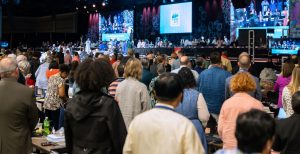 The demographics of this year’s Conference reflect a truly global Church, with 862 delegates, 55.9% from the United States, 32% from Africa, 6% from the Philippines, and 4.6% from Europe, including Russia. On the first day, 751 delegates were present, which is 87% of the total, reflecting a slightly lower attendance compared to the first day of the 2016 Conference, which was 91%.
The demographics of this year’s Conference reflect a truly global Church, with 862 delegates, 55.9% from the United States, 32% from Africa, 6% from the Philippines, and 4.6% from Europe, including Russia. On the first day, 751 delegates were present, which is 87% of the total, reflecting a slightly lower attendance compared to the first day of the 2016 Conference, which was 91%.
Rev. Dawn Taylor-Storm, co-leader of the EPA clergy delegation and EPA&GNJ’s episcopal assistant to Bishop John Schol, was deeply moved by the opening moments. “The opening plenary literally moved me to tears,” she reflected. “The worship experience felt like an experience of Pentecost, as people of all languages, cultures and understandings united around a commitment to a reformed and renewed United Methodist connection.”
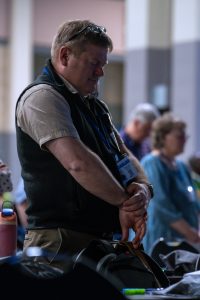
GNJ delegate Tom Lank
As the General Conference progresses through May 3, delegates will tackle pivotal topics including potential structural changes aimed at refining the Church’s identity and direction. With the early tone set by Bishop Bickerton’s compelling call for commitment and unity, the hope is that the assembly will not only deliberate on operational matters but also foster the spirit of unity and renewal that has been so prominently invoked.
Tom Lank, a full member deacon and member of the GNJ delegation, shared how he and many entered the plenary hall with their guard up, expecting divisiveness that they experienced in the past. Lank observed a change this year. “As we worshipped and as Bishop Bickerton began to preach us out of Egypt toward the Promised Land, you could feel the mood shift,” he shared.
“Maybe this time, instead of fighting about who we are, we will set the direction for who we are becoming as United Methodists. There’s liberation in that.”

